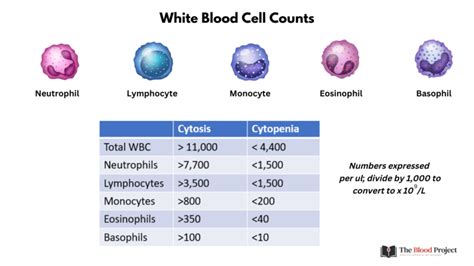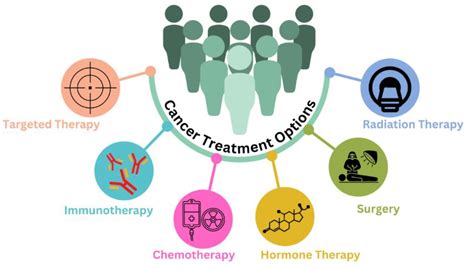Intro
Discover the meaning of high white cell count, its causes, and implications. Learn about leukocytosis, immune responses, and related conditions like infection, inflammation, and leukemia, to understand elevated WBC levels and their effects on overall health.
A high white cell count, also known as leukocytosis, is a condition where the number of white blood cells in the body exceeds the normal range. White blood cells, also known as leukocytes, are a crucial part of the immune system, helping to fight off infections and diseases. When the body detects an infection or inflammation, it produces more white blood cells to combat the invading organisms. However, an abnormally high white cell count can be a sign of an underlying health issue.
The normal range for white blood cell count varies from person to person, but it is generally considered to be between 4,000 and 11,000 cells per microliter of blood. A high white cell count can be caused by a variety of factors, including infections, inflammatory diseases, and certain types of cancer. In some cases, a high white cell count can be a sign of a more serious underlying condition, such as leukemia or lymphoma.
Understanding the causes and implications of a high white cell count is essential for proper diagnosis and treatment. In this article, we will delve into the world of white blood cells, exploring their functions, the causes of a high white cell count, and the potential health implications. We will also discuss the various tests and procedures used to diagnose and monitor white blood cell count, as well as the available treatment options.
What are White Blood Cells?

Neutrophils are the most abundant type of white blood cell and are primarily responsible for fighting off bacterial and fungal infections. Lymphocytes, on the other hand, are involved in the immune response to viral infections and play a key role in the development of immune memory. Monocytes are large white blood cells that mature into macrophages, which are involved in the clearance of foreign substances and debris. Eosinophils and basophils are involved in the immune response to parasitic infections and allergic reactions, respectively.
Functions of White Blood Cells
White blood cells perform a range of functions, including: * Phagocytosis: the process of engulfing and destroying foreign particles and microorganisms * Antibody production: the production of proteins that recognize and bind to specific antigens * Activation of immune responses: the activation of other immune cells, such as macrophages and natural killer cells * Inflammation: the promotion of inflammation to isolate and eliminate infectionsCauses of a High White Cell Count

Types of Infections that Cause a High White Cell Count
The type of infection that causes a high white cell count can vary depending on the underlying condition. Some common types of infections that can cause a high white cell count include: * Bacterial infections: such as pneumonia, meningitis, and sepsis * Viral infections: such as influenza, HIV, and hepatitis * Fungal infections: such as candidiasis and aspergillosis * Parasitic infections: such as malaria and toxoplasmosisDiagnosis and Testing

In addition to a CBC test, other tests and procedures may be used to diagnose and monitor a high white cell count. These may include:
- Blood smear: a test that examines the appearance of blood cells under a microscope
- Bone marrow biopsy: a procedure that involves removing a sample of bone marrow tissue for examination
- Imaging tests: such as X-rays, CT scans, and MRI scans, which can help identify underlying conditions that may be causing a high white cell count
Interpreting White Blood Cell Count Results
Interpreting white blood cell count results requires careful consideration of the individual's medical history, symptoms, and other test results. A high white cell count can be a sign of an underlying infection or inflammatory condition, but it can also be a normal response to a viral infection or other non-serious condition.Treatment Options

Managing Symptoms and Preventing Complications
Managing symptoms and preventing complications is an essential part of treating a high white cell count. This may involve: * Rest and relaxation: to help the body recover from infection or inflammation * Pain management: to alleviate symptoms such as pain and discomfort * Nutrition and hydration: to support the immune system and promote healing * Avoiding infections: by practicing good hygiene and avoiding close contact with others who may be infectedComplications and Risks

Reducing the Risk of Complications
Reducing the risk of complications involves: * Practicing good hygiene: to avoid infections * Avoiding close contact with others: who may be infected * Getting vaccinated: against certain infections, such as influenza and pneumonia * Managing underlying conditions: such as diabetes and heart disease, which can increase the risk of complicationsWhat is a normal white blood cell count?
+A normal white blood cell count is typically considered to be between 4,000 and 11,000 cells per microliter of blood.
What causes a high white cell count?
+A high white cell count can be caused by a variety of factors, including infections, inflammatory diseases, and certain types of cancer.
How is a high white cell count diagnosed?
+A high white cell count is typically diagnosed through a complete blood count (CBC) test, which measures the levels of different types of blood cells.
What are the treatment options for a high white cell count?
+The treatment options for a high white cell count depend on the underlying cause of the condition and may include antibiotics, antiviral medications, anti-inflammatory medications, chemotherapy, and immunotherapy.
How can I reduce the risk of complications from a high white cell count?
+Reducing the risk of complications involves practicing good hygiene, avoiding close contact with others who may be infected, getting vaccinated against certain infections, and managing underlying conditions.
In conclusion, a high white cell count is a condition that requires prompt medical attention. Understanding the causes, symptoms, and treatment options is essential for proper diagnosis and management. By practicing good hygiene, avoiding close contact with others, getting vaccinated, and managing underlying conditions, individuals can reduce the risk of complications and promote overall health and well-being. We encourage readers to share their experiences and ask questions in the comments section below, and to consult with a healthcare professional for personalized advice and treatment.
